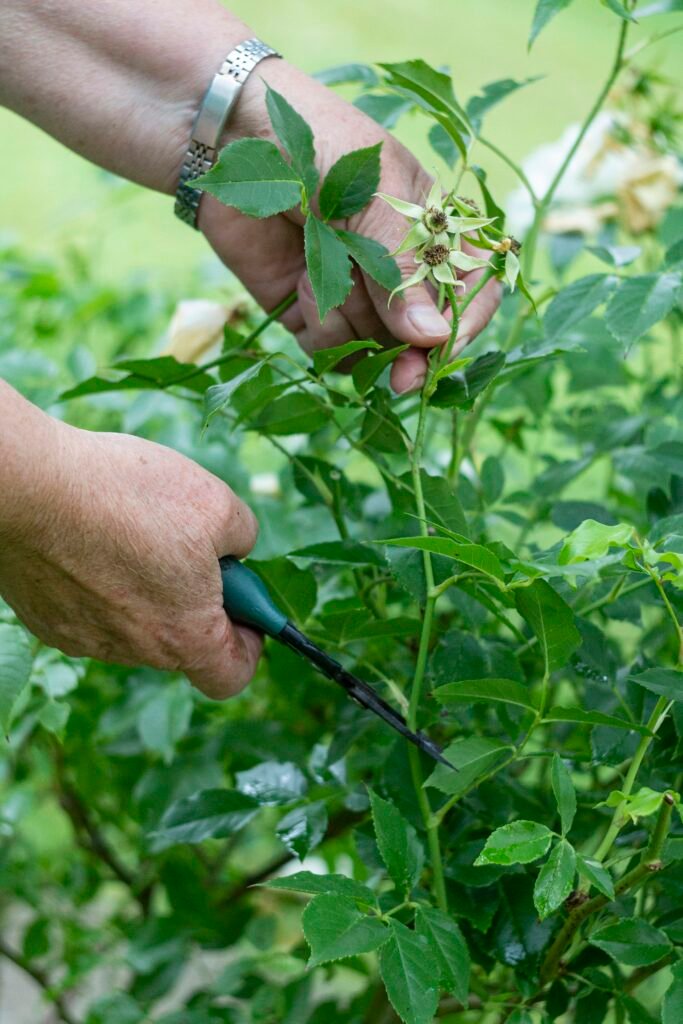String bracelets have become a popular accessory, adding a touch of charm and color to any outfit. However, with daily wear, these delicate pieces can easily face wear and tear, leaving you with a broken or tangled bracelet. But fear not! In this ultimate guide, we will share with you some invaluable tips and tricks to prevent the wear and tear of your beloved string bracelets. From proper storage to cleaning techniques, we’ve got you covered. Say goodbye to broken threads and hello to long-lasting, beautiful bracelets that will withstand the test of time.

This image is property of images.unsplash.com.
Choose the Right Materials
When it comes to string bracelets, choosing the right materials is crucial to ensure their longevity. Consider the type of string you use for your bracelets. Different types of string have varying levels of durability and strength. Opt for materials such as nylon or polyester that are known for their durability and ability to withstand everyday wear and tear.
In addition to the string, the beads and charms you choose for your bracelet also play a role in its longevity. Choose beads and charms made from high-quality materials that are less prone to fading, tarnishing, or breaking. Look for beads made from durable materials such as stainless steel, sterling silver, or high-quality glass. These materials are more likely to withstand daily use without losing their shine or integrity.
Lastly, consider the closures used in your string bracelets. High-quality closures, such as sturdy lobster clasps or adjustable sliding knots, are essential for ensuring that your bracelets stay securely in place. Avoid thin or flimsy closures that are more prone to breakage or slipping off.
Proper Storage
Proper storage is key to preventing wear and tear on your string bracelets. To keep your bracelets looking their best, store them separately from other jewelry pieces. This prevents tangling and minimizes the risk of scratches or damage from other metal or sharp objects.
Using a jewelry box or organizer specifically designed for bracelets can help keep them organized and protected. Look for compartments or holders that can keep each bracelet separate and easily accessible. This not only helps maintain their condition but also makes it easier for you to find and choose your favorite bracelets to wear.
It’s also important to avoid exposing your bracelets to sunlight and moisture when storing them. Prolonged exposure to sunlight can cause fading of colors, while moisture can lead to mold, tarnishing, or rusting of metal components. Store your bracelets in a cool and dry place, away from direct sunlight or areas with high humidity.

This image is property of images.unsplash.com.
Avoiding Excessive Strain
String bracelets are delicate pieces that can easily get damaged if subjected to excessive strain. To prevent wear and tear, remove your bracelets before engaging in activities that may put stress on them. This includes activities like intense workouts, sports, or manual labor where the bracelets may get caught or pulled.
When wearing your string bracelet, be mindful of not pulling or tugging on the strings unnecessarily. Excessive pulling can weaken the fibers of the string and lead to breakage or fraying. Instead, handle your bracelet with care, gently sliding it on and off your wrist without applying too much force.
As tempting as it may be to wear your favorite string bracelet to bed, it’s best to avoid doing so. The tossing and turning during sleep can create tension on the strings and increase the risk of damage. Removing your bracelets before sleep ensures that they remain in the best possible condition.
Cleaning and Maintenance
Regular cleaning and maintenance are essential for keeping your string bracelets looking their best. Clean your bracelets regularly using a mild detergent, lukewarm water, and a soft cloth. Gently scrub the surface of the beads and charms to remove any dirt or grime. Rinse thoroughly and pat dry with a clean cloth.
For delicate parts of your bracelet or intricate designs, use a soft brush, such as a toothbrush, to clean hard-to-reach areas. Be gentle when brushing to avoid causing damage to the string or fragile components. Take extra care around any gemstones or crystals, as they may require specific cleaning methods.
During the cleaning process, it’s also important to inspect your bracelet for loose threads or beads. If you notice any loose or damaged components, address them promptly to prevent further damage or complete loss of the bracelet. Repair or secure loose beads with additional knots or seek professional assistance if necessary.

This image is property of images.unsplash.com.
Safeguarding Against Water Damage
Water can be a significant threat to the condition of your string bracelets. To prevent water damage, it’s important to avoid wearing your bracelets in the shower or pool. The chemicals present in soaps, shampoos, and pool water can be harsh on the string and metal components, leading to degradation or discoloration.
If you plan to swim or exercise, it’s best to remove your bracelets beforehand. The combination of water, movement, and potential exposure to chlorine or saltwater can accelerate wear and tear. Once you’re done with your activities, thoroughly dry your bracelets before storing them to prevent moisture buildup.
In situations where your bracelets do come into contact with water, make sure to dry them thoroughly. Use a soft cloth to remove any excess moisture and leave them in a well-ventilated area until completely dry. This prevents the growth of mold or mildew and minimizes the risk of damage.
Minimizing Contact with Chemicals
Chemicals found in perfumes, lotions, and cleaning products can have detrimental effects on string bracelets. To minimize the risk of damage, avoid wearing your bracelets while applying perfumes or lotions directly to your skin. Wait until the products are fully absorbed before putting on your bracelets to prevent any residue from coming into contact with them.
When using cleaning products, it’s best to remove your bracelets to avoid any potential chemical reactions. Certain cleaning agents may contain ingredients that can tarnish or corrode metal components or weaken the string. Keep your bracelets in a safe place away from any chemicals until the cleaning is complete.
If your bracelets do come into contact with potentially harmful chemicals, rinse them thoroughly with water as soon as possible. Dry them carefully to ensure that no residue remains. Taking these precautions will help extend the lifespan of your string bracelets.
Regular Inspections
Regular inspections play a crucial role in preventing wear and tear on your string bracelets. Take the time to check your bracelets for any signs of wear and tear, such as fraying strings, loose knots, or damaged beads. Addressing these issues promptly can prevent further damage and potential loss of the bracelet.
For weak areas of your bracelet that may be prone to damage, reinforce them with additional knots. This strengthens the string and prevents it from breaking under strain. By reinforcing weak areas, you can prolong the lifespan of your bracelet and enjoy wearing it for a longer period.
If your bracelet shows extensive signs of wear and tear, including broken or missing beads, it may be time to consider replacing worn-out strings or beads. Re-stringing or replacing components can revive your bracelet and restore it to its former glory. Don’t hesitate to seek professional assistance if you’re unsure about handling repairs yourself.
Knotting Techniques
Learning appropriate knotting techniques is essential for maintaining the integrity of your string bracelets. Secure and durable knots ensure that your bracelet stays in place and withstands everyday wear. Take the time to learn different knotting methods, such as the square knot or the surgeon’s knot, that are commonly used in string bracelet-making.
Practice and improve your knotting skills regularly to become more proficient in creating strong and reliable knots. Consider using tutorials or attending workshops to learn from experienced jewelry makers. Developing your knotting skills will not only help preserve your existing bracelets but also enable you to create new ones with confidence.
Adjusting Bracelet Size
Ensuring a proper fit is crucial for both the comfort and longevity of your string bracelets. A bracelet that is too tight may cause discomfort and strain the strings unnecessarily, increasing the risk of breakage. On the other hand, a bracelet that is too loose may slide off easily and be at a higher risk of getting caught or damaged.
Learn how to adjust the size of your bracelets to fit your wrist perfectly. This may involve adding or removing knots, using adjustable closures, or resizing the string altogether. Understanding how to adjust bracelet size allows you to customize your bracelets to your preferences and ensure a comfortable and secure fit.
If you’re unsure about adjusting the size of your bracelet yourself, consider seeking professional resizing services. Jewelers or skilled crafters can help you achieve the perfect fit without the risk of damaging the bracelet. Investing in professional resizing can be a worthwhile step in preserving the longevity of your string bracelets.
Avoiding Heat and Fire
Heat and fire are two primary threats to the condition and safety of your string bracelets. It’s important to keep your bracelets away from open flames, such as candles or stoves, as the heat can cause the strings to melt or catch fire. Store your bracelets in a safe place, away from any potential sources of fire.
Extreme temperatures, whether hot or cold, can also damage your bracelets. Avoid exposing them to direct sunlight for extended periods, as the heat can weaken the string and fade colors. Similarly, extreme cold can make the string brittle and prone to breakage. Protect your bracelets by keeping them away from extreme temperature variations.
Even when dealing with hot surfaces, such as cooking utensils or hot beverages, it’s important to prevent direct contact with your bracelets. The heat can transfer quickly and potentially burn your skin or damage the string and beads. Take extra care when handling hot objects and keep your bracelets safe from heat sources.
By following these tips and guidelines, you can ensure that your string bracelets stand the test of time and keep looking beautiful for years to come. With proper care, storage, and maintenance, you can enjoy wearing your favorite bracelets without worrying about wear and tear. So go ahead, show off your stylish string bracelets, and let them be a reflection of your unique personality.
